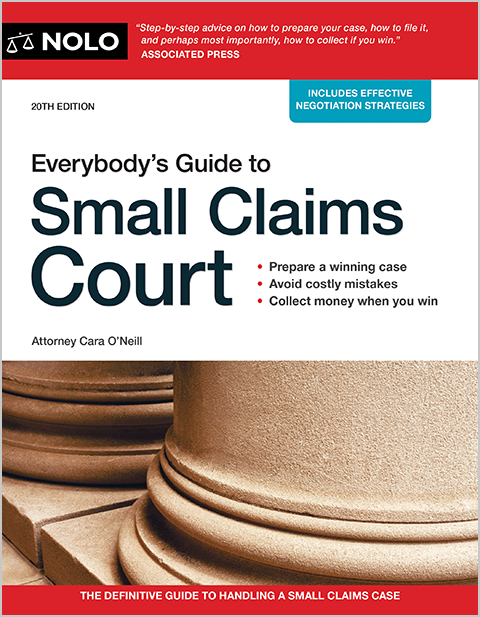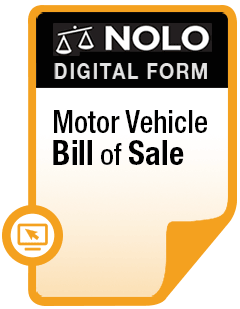Find out what to do after a hit-and-run auto accident and what the best option might be to cover your losses and injuries.
A hit-and-run car accident can leave you with injuries, vehicle damage, and plenty of unpaid bills. Your own car insurance can help here, including uninsured motorist coverage or "personal injury protection" (for your injuries) and collision coverage (for your vehicle damage). If you can identify the hit-and-run driver, you can try to hold them financially responsible for the crash, but that's often easier said than done.
Let's take a closer look at what to do after a hit-and-run accident, and possible options to recover compensation for your injuries and other accident-related losses.
What Is a Hit and Run Accident?
You're side-swiped on the highway and the other driver speeds away. Or you return to your car in the parking lot after doing some shopping, only to find a huge dent in your bumper and no note on your windshield.
A hit-and-run traffic accident happens when another driver makes physical contact with you or your vehicle and then doesn't stop to render assistance, or to share contact and insurance information. Hit-and-run accidents include vehicle-on-vehicle (including motorcycle), vehicle-on-bicycle, and vehicle-on-pedestrian collisions.
What To Do If You've Been in a Hit-and-Run Collision
First things first after a car accident. Check to see if anyone's injured. If so, call 911 and get medical help. Hit-and-run is a crime in every state, so regardless of injuries you should call the police. Don't try to chase down the fleeing driver—that's a job for law enforcement.
Once you've summoned medical help and the police, here are the things you should do after a hit-and-run accident.
At the Scene of the Collision
Focus on gathering as much information as you can about the hit-and-run vehicle and driver, including:
- the make, model, and color of the car
- any damage to the car
- the license plate number, or even a partial number
- a description of the driver, and
- the direction the car was headed
While you're at the scene, you should also:
- check to see if there are any security or surveillance cameras in the area and, if so, ask about getting video of the collision
- get contact information for all witnesses so you (or your lawyer) can follow up and get written or recorded statements
- take photos of the accident scene, the damage to your vehicle, and any injuries you suffered
- get the name and badge number of the responding police officer and ask how to get a copy of the police report, and
- ask the police officer whom you should contact about the follow-up investigation to track down the fleeing driver.
After You've Left the Scene
Once you've left the scene, you should:
- call your doctor and get any necessary medical care
- notify your auto insurance company
- contact witnesses and get statements (though it's generally best to have a lawyer who will deal with this kind of investigation)
- get repair estimates for your car and, if you're financially able, have the repairs done, and
- stay in touch with the police to check on the status of the hit-and-run investigation.
Compensation for Your Hit-and-Run Accident
Your recovery options are limited if you never find out who caused your collision. Chances are you'll look to your own insurance policies if you have available coverage. Otherwise, you could end up being out of pocket for your losses.
Here are your options:
- bring a claim against the fleeing driver, if the police make an arrest or the driver is otherwise found
- file a claim under your own auto or health insurance, if you're covered
- file a claim with your state's crime victim compensation board, if you're eligible, and
- pay out of your own pocket.
Claim Against the Hit-and-Run Driver
The police will do what they can to track down the hit-and-run driver. And because today almost everyone carries a camera in their pocket, there's a fair chance that the bad actor will be brought to justice. But don't get your hopes up. Lots of hit-and-run accidents go unsolved.
If the police do catch the driver, then you can file an insurance claim—if the driver was insured—or a lawsuit to seek compensation for your injuries. Here again, don't get your hopes up. What are the odds that your hit-and-run driver carried auto liability coverage as required by law? Perhaps not great, but it's worth looking into if the driver is caught.
Should you file a lawsuit against the hit-and-run driver? Before you rush to the courthouse, think it through carefully. (This is one of many good issues to discuss with a lawyer.) Odds are that the driver is what lawyers call "judgment proof," meaning that they have no insurance and no money or other assets you can seize to collect any judgment you might get. If that's the case, you could be throwing "good money after bad" and digging yourself into a deeper financial hole.
Does Uninsured Motorist Coverage Apply to a Hit and Run?
Yes. If you have uninsured motorist coverage as part of your car insurance policy, it will cover your car accident injuries and related losses (including "pain and suffering") in much the same way as a claim against the hit and run driver's insurance might. But most states don't require uninsured motorist (UIM) coverage as part of a standard car insurance policy, so make sure you actually have this kind of coverage.
If you have UIM coverage, you probably need to take a number of specific steps before you can use it to cover a hit and run accident, like:
- making sure you report the car accident to law enforcement (often within a short amount of time, like 24 hours)
- submitting a sworn statement or affidavit to your insurance company declaring that you've been injured in a car accident with another driver who's identity isn't "ascertainable."
Learn more about making an uninsured motorist coverage claim after a car accident.
It's worth noting that uninsured motorist coverage won't apply to your vehicle damage, and even if you have a specific kind of coverage called "uninsured motorist property damage" or something similar, it probably won't apply to vehicle damage resulting from a hit and run.
Other Claims Under Your Own Auto or Health Insurance
In addition to an uninsured motorist claim, other possibilities for getting compensation from your own insurance coverage after a hit and run car accident include:
- personal injury protection (PIP) coverage
- medical payments coverage
- collision coverage, and
- health insurance
PIP Coverage
Personal injury protection coverage (PIP) is a type of no-fault insurance. It pays the medical expenses and lost wages for the insured driver (and all other covered persons) after a car accident, regardless of who caused the crash. If you live in a no-fault state you should have this coverage. It's optional coverage in some states that aren't no-fault states.
Medical Payments Coverage
Medical payments coverage (MedPay), like PIP, is another kind of no-fault insurance. It will pay the medical expenses of any covered person after a wreck, no matter who was to blame for the collision. MedPay isn't required in most states, but you can buy it as an add-on to other insurance coverages.
Collision Coverage
Collision coverage pays the cost to repair or replace your car after an accident, even if you were at fault. If you finance the purchase or lease of a car, the lender will require this coverage. Otherwise, it's typically optional.
As we touched on above, if you have uninsured motorist (UIM) protection as part of your car insurance policy, it will typically cover your car accident injuries after a hit and run, but not your vehicle damage. But if you happen to have both UIM and collision coverage, you should be able to get compensation for both kinds of losses.
Health Insurance
If you have a health insurance policy, you can use it to pay for hit-and-run medical expenses that aren't otherwise insured. You'll be out-of-pocket for your health insurance deductible, but you can cover that with PIP or MedPay if you have one of those coverages.
Claim Against Your State Crime Victim Compensation Board
Every state has a crime victim compensation board. The board administers a fund that's available to help victims of violent crime pay crime-related expenses not covered by insurance or other government benefits. Victims of drunk drivers and the families of homicide victims are among those who can apply for assistance.
Specific requirements and application procedures vary from state to state. Check your state's page to see if you're eligible for help.
Paying Out of Pocket
If you can't recover from the hit-and-run driver, don't have available insurance, and aren't able to recover from a crime victim compensation fund, you're probably out of luck. But before you give up, consider these alternatives:
- check with other crime-victim or similar resources that might be available to help, and
- see if your state or local bar associations (groups of lawyers in your state or county) are aware of any financial or other assistance programs.
Criminal Penalties for Leaving the Scene of an Accident
State criminal laws classify and punish leaving the scene of an accident in different ways. In all states, the crime is classified as a misdemeanor or felony, usually based on the seriousness of the accident.
The crime charged will fall somewhere on the crime classification spectrum used in the state—from the least serious (a low-level misdemeanor) to the most serious (a high-level felony). For example, a driver who leaves the scene of a single-car accident where only minor property damage resulted might be charged with a Level 3 misdemeanor, the least serious level crime. A driver who flees the scene of a fatal crash in the same state might be charged with a Level 2 felony. The range of possible punishments depends on the severity of the crime.
Using California as an example, a driver who leaves the scene of an accident can be jailed for up to one year, fined between $1,000 and $10,000, or both jailed and fined.
(Learn more about the consequences of a hit-and-run accident.)
Get a Lawyer to Help Recover Your Losses
If you've been the victim of a hit-and-run driver, you may feel angry, frustrated, and hopeless. All understandable reactions. The prospect of suing the other driver or chasing down possible insurance coverage might seem overwhelming, particularly if you're injured.
An experienced car accident lawyer might be able to help. This is someone who's dealt with hit-and-run claims like yours and who knows how to track down possible sources of recovery. Look for a lawyer who will accept your case on a contingency basis. This means the lawyer won't charge you by the hour but will take a percentage (usually between 25% and 40%) of any settlement or judgment you receive.
Finally, if you want help finding crime-victim or similar resources, look into getting free or low-cost legal help.



